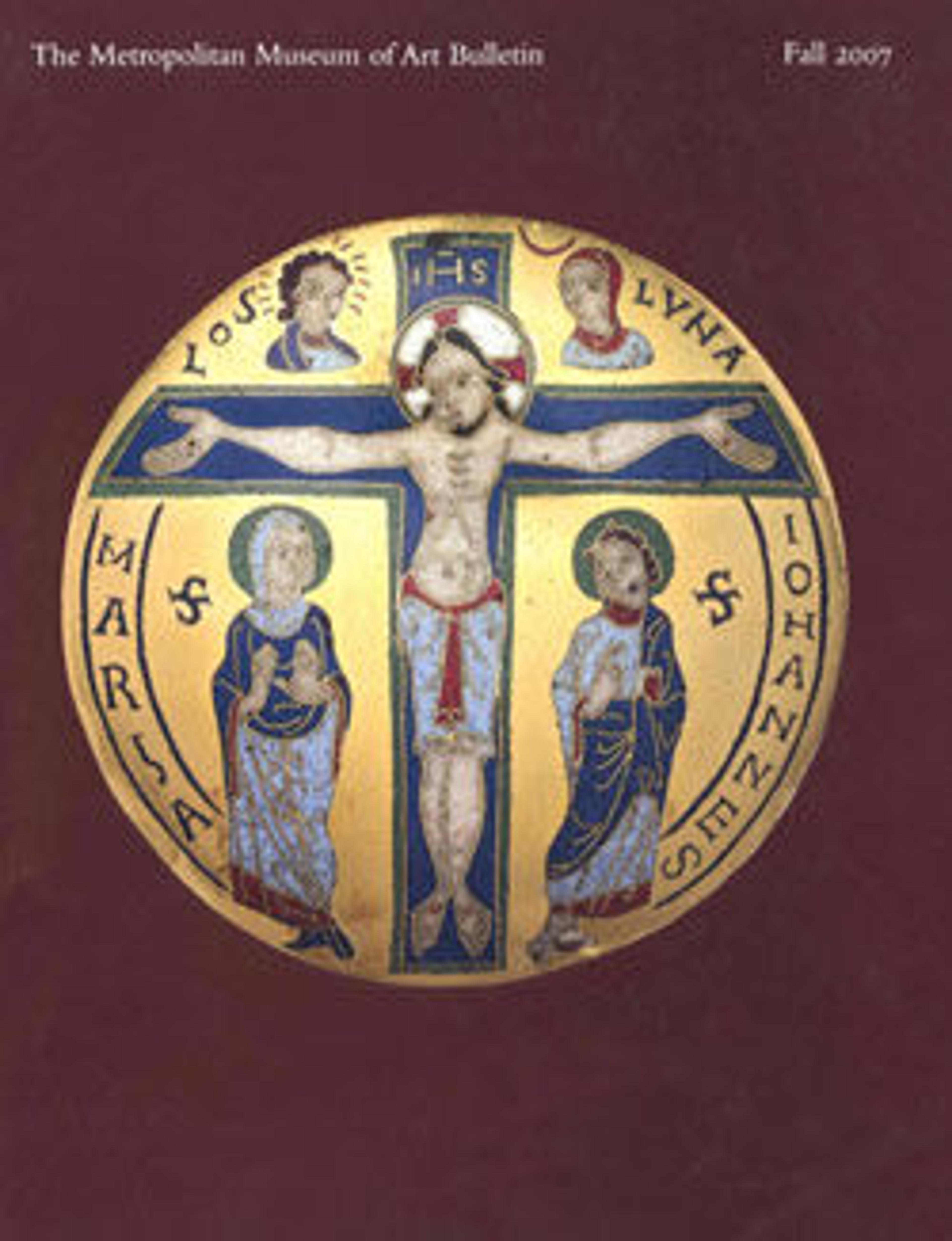Marble strigilated vase with snake handles
The foot is restored.
This marble vase with handles in the form of entwined serpents is arguably the finest and best preserved example known today of a type of Roman vessel with a strigilated pattern carved on the body. These elongated S-shaped channels were a popular form of relief decoration on vases and sarcophagi, especially in the second half of the second century and the third century a.d. Two bearded snakes form the handle on either side of the vase. With their upper bodies coiled on the broad shoulder, they stretch their flat heads forward across the deep concavity of the neck to bite the projecting rim, setting up a play of spatial depth and light and dark effects. The motif of entwined serpents is appropriate for a funerary vase. Linked with the earth, snakes were associated with chthonian powers, and the Greeks and Romans regarded them as guardians of sacred places, houses, and tombs. In the absence of a funerary inscription, however, it is not possible to determine whether this vase was originally intended as an ash urn or for purely decorative use.
This marble vase with handles in the form of entwined serpents is arguably the finest and best preserved example known today of a type of Roman vessel with a strigilated pattern carved on the body. These elongated S-shaped channels were a popular form of relief decoration on vases and sarcophagi, especially in the second half of the second century and the third century a.d. Two bearded snakes form the handle on either side of the vase. With their upper bodies coiled on the broad shoulder, they stretch their flat heads forward across the deep concavity of the neck to bite the projecting rim, setting up a play of spatial depth and light and dark effects. The motif of entwined serpents is appropriate for a funerary vase. Linked with the earth, snakes were associated with chthonian powers, and the Greeks and Romans regarded them as guardians of sacred places, houses, and tombs. In the absence of a funerary inscription, however, it is not possible to determine whether this vase was originally intended as an ash urn or for purely decorative use.
Artwork Details
- Title: Marble strigilated vase with snake handles
- Period: Antonine
- Date: 2nd half of the 2nd century CE
- Culture: Roman
- Medium: Marble
- Dimensions: H.: 17 5/16 in. (44 cm)
- Classification: Stone Sculpture
- Credit Line: Rogers Fund, 2007
- Object Number: 2007.31a, b
- Curatorial Department: Greek and Roman Art
More Artwork
Research Resources
The Met provides unparalleled resources for research and welcomes an international community of students and scholars. The Met's Open Access API is where creators and researchers can connect to the The Met collection. Open Access data and public domain images are available for unrestricted commercial and noncommercial use without permission or fee.
To request images under copyright and other restrictions, please use this Image Request form.
Feedback
We continue to research and examine historical and cultural context for objects in The Met collection. If you have comments or questions about this object record, please complete and submit this form. The Museum looks forward to receiving your comments.
